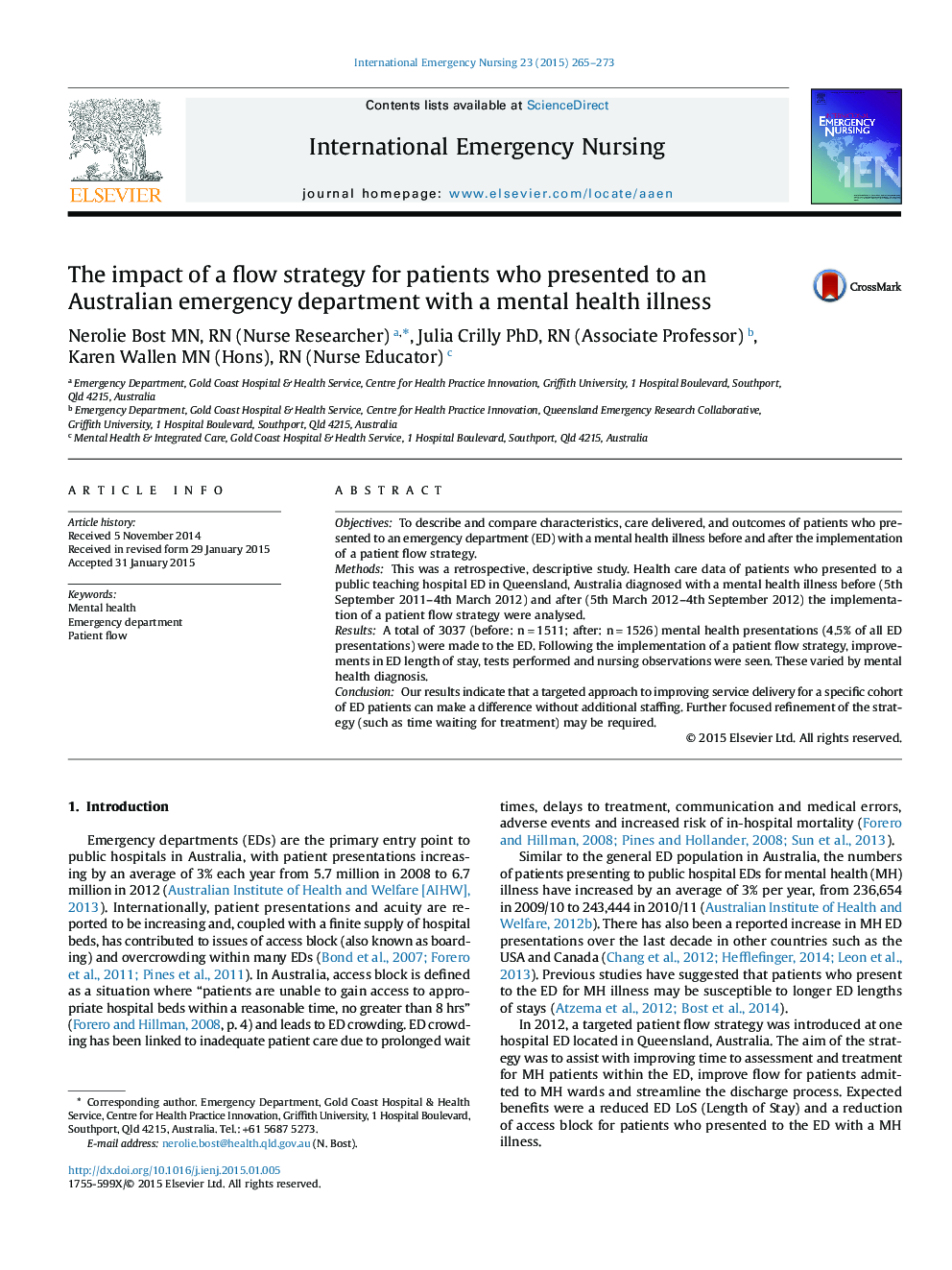| Article ID | Journal | Published Year | Pages | File Type |
|---|---|---|---|---|
| 2608134 | International Emergency Nursing | 2015 | 9 Pages |
•Almost 40% of patients diagnosed with mental health illness were admitted from ED.•A new model of care to improve patient flow from ED was implemented.•The proportion of patients admitted or discharged from ED within 4 hours increased.•Time spent waiting to see a medical officer did not change significantly.•Improvements in service delivery can be realised without additional staffing.
ObjectivesTo describe and compare characteristics, care delivered, and outcomes of patients who presented to an emergency department (ED) with a mental health illness before and after the implementation of a patient flow strategy.MethodsThis was a retrospective, descriptive study. Health care data of patients who presented to a public teaching hospital ED in Queensland, Australia diagnosed with a mental health illness before (5th September 2011–4th March 2012) and after (5th March 2012–4th September 2012) the implementation of a patient flow strategy were analysed.ResultsA total of 3037 (before: n = 1511; after: n = 1526) mental health presentations (4.5% of all ED presentations) were made to the ED. Following the implementation of a patient flow strategy, improvements in ED length of stay, tests performed and nursing observations were seen. These varied by mental health diagnosis.ConclusionOur results indicate that a targeted approach to improving service delivery for a specific cohort of ED patients can make a difference without additional staffing. Further focused refinement of the strategy (such as time waiting for treatment) may be required.
